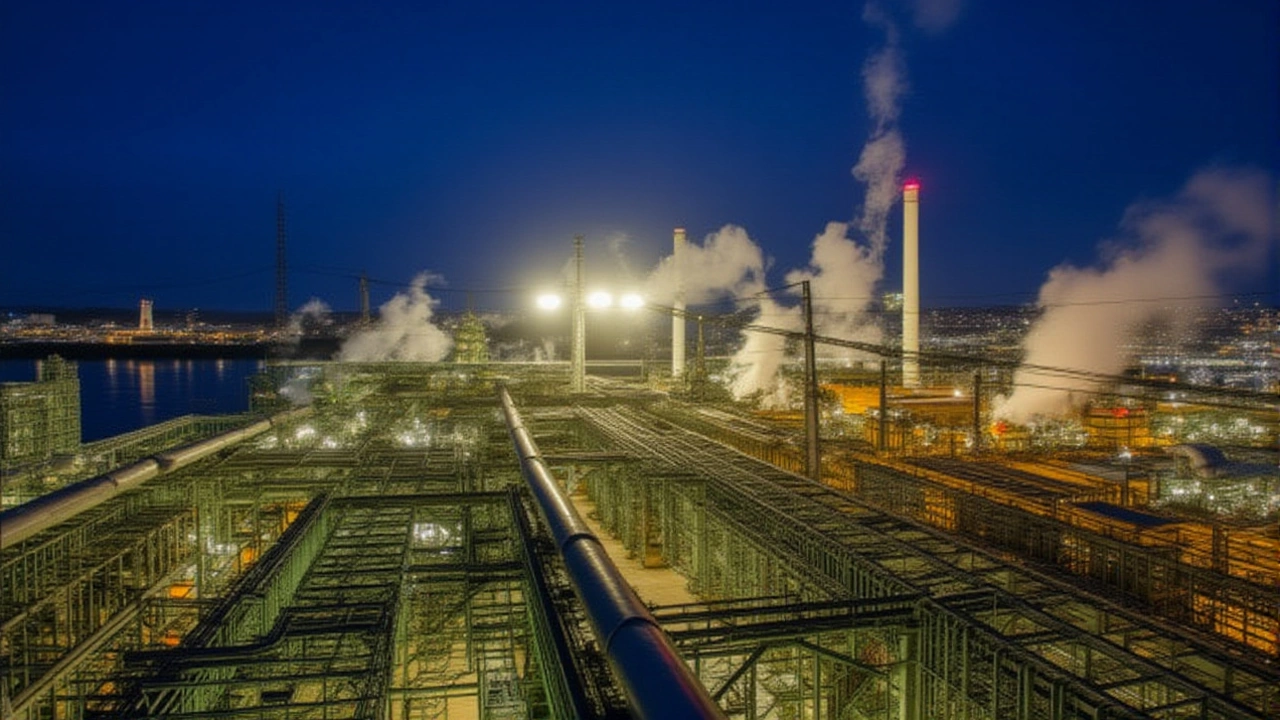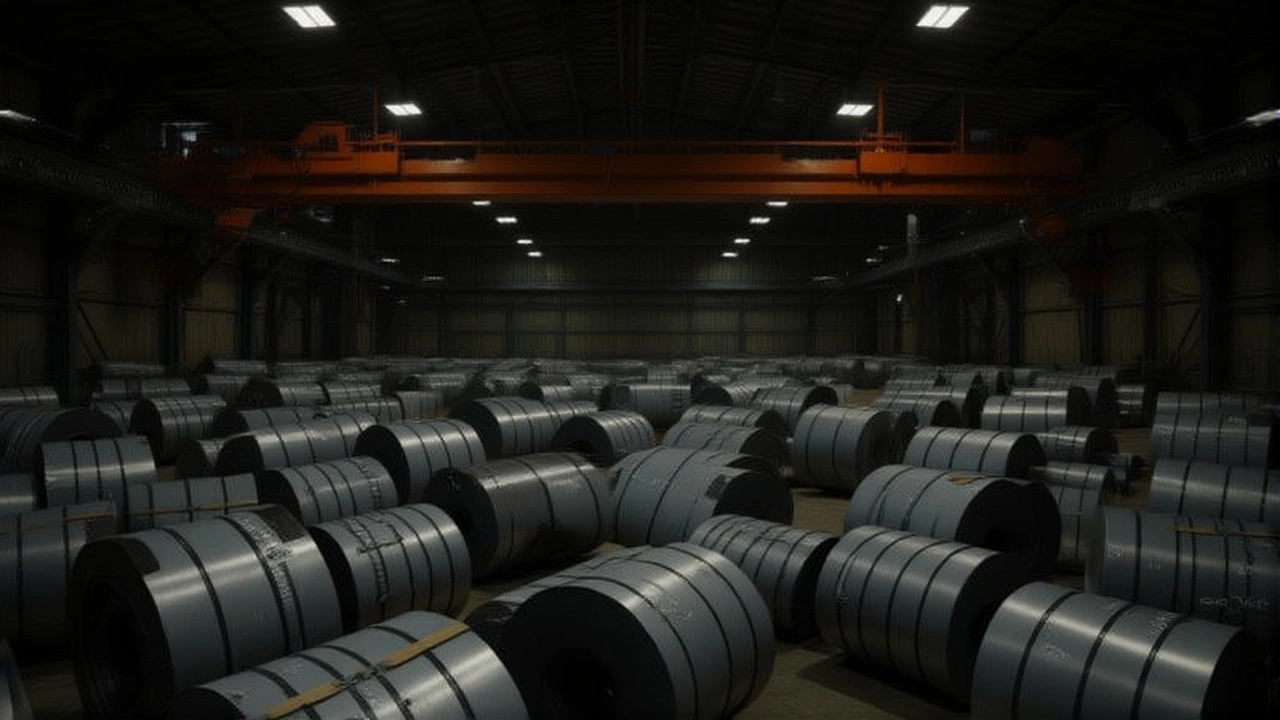When European Union unveiled a new trade shield on March 12, 2025, the steel world sat up straight. The measure, crafted by Eurofer, the European Steel Association, rolls out a Tariff Rate Quota that levies a 50% duty on any steel entering the bloc beyond an 18‑million‑tonne free‑allowance. Why does it matter? Because the EU’s steelmakers—still reeling from a slump that left plants running at just 65% of capacity—could finally breathe, protecting roughly 200,000 jobs across the continent.
Why the EU opted for a Tariff Rate Quota
For years the bloc has watched cheap, often subsidised steel pour in from Asia, especially China, undercutting local producers and inflating carbon‑intensive imports. The World Trade Organization (WTO) makes clear that blanket duties risk being deemed illegal; the United States, for instance, sparked disputes by slapping a flat 50% tariff on every ounce of imported steel under Section 232.
Instead, the EU’s approach leans on Article 28 of the General Agreement on Tariffs and Trade (GATT), which permits tariff‑rate‑quotas (TRQs) so long as they are transparent, non‑discriminatory, and periodically reviewed. By setting a ceiling that mirrors pre‑flood conditions—18 million tonnes, roughly the combined output of France, Belgium and Luxembourg in 2013—the bloc hopes to let in a "fair share" of steel while penalising the excess that drives prices down.
How the TRQ works and the numbers behind it
- Free‑allowance: 18 million tonnes of steel per year, duty‑free.
- Beyond the quota: 50% ad‑valorem tariff applied to each tonne.
- Review cycle: Initial assessment every two years, with adjustments allowed after a six‑month public consultation.
- Scope: Primary steel products such as hot‑rolled coil, cold‑rolled sheet and reinforcing bars. Derivatives may be added later.
To put the scale in perspective, the EU consumed about 147 million tonnes of steel in 2023, with imports accounting for 30% of that demand. The 18‑million‑tonne quota therefore covers just over one‑eighth of total consumption—enough to keep downstream manufacturers supplied while nudging importers to respect the limit.
By March 2025, the EU expects the TRQ to shave roughly €2.3 billion off the annual trade deficit in steel, according to internal calculations shared with Eurofer. Those savings could be redirected into modernising plants and investing in low‑carbon technologies.
Industry reaction and job impacts
"We finally have a tool that balances market access with the need to protect our industry," said Christian Eggert, President of Eurofer. "Our plants must climb back to an 80‑85% utilisation rate if we are to stay competitive and meet Europe’s climate goals. Right now we’re stuck around 65%—that's unsustainable."
The numbers are stark. In Finland, the Finnish Ministry of Economic Affairs confirmed on February 28 that steelmaker SSAB will cut 650 jobs by June, citing the same import pressure the EU hopes to curb. Similar warnings have echoed from Germany’s Ruhr region, where steel firms warned of potential closures if the import surge continues.
Experts say the measure could also unlock financing for decarbonisation. Dr. Elena Rossi, a professor of industrial policy at the University of Leuven, notes, "When companies see a stable trade environment, they’re far more willing to lock in long‑term green investments, such as electric‑arc furnaces or hydrogen‑based reduction."

Comparisons with the U.S. steel tariffs
The United States’ 2022‑2023 25%‑50% tariffs were introduced as a national‑security move, but they sparked retaliation from the EU, China and Canada at the WTO. By contrast, the EU’s TRQ is a nuanced instrument that aims to avoid a trade war. It lets in essential inputs—think of the “air‑lift” of steel for critical infrastructure—while still targeting the “excess baggage” that undercuts domestic producers.
One key difference: the U.S. duties apply to every import, regardless of price or origin, creating a blunt‑force effect. The EU’s quota, meanwhile, is calibrated to 2013 market conditions, before the massive Chinese overcapacity wave hit in 2016. That historical anchor helps ensure the free‑allowance is not arbitrarily low.
Looking ahead: revisions, extensions, and the green angle
The TRQ isn’t set in stone. Eurofer has pledged to reassess the quota after the first two‑year review, taking into account production forecasts from the European Steel Association’s 2025 outlook. If global steel output eases—perhaps due to China’s own decarbonisation commitments—the EU could tighten the quota further.
There’s also talk of extending the same protective logic to steel derivatives, such as pipe and wire rod, which have already felt the pinch of U.S. duties. A broader package could be on the table by late 2026, depending on how the current scheme performs.
In the words of Eggert, "Trade protection is only the first step. The real challenge is to couple it with a clear pathway to net‑zero steel by 2050." The EU’s Green Deal envisions a carbon‑neutral industry, and the certainty offered by the TRQ could be the missing piece that lets firms invest in electric furnaces, carbon capture, and hydrogen‑based processes without fearing a flood of cheap, high‑carbon imports.
Frequently Asked Questions
How does the new TRQ affect steel prices for European manufacturers?
The quota allows up to 18 million tonnes of steel to enter duty‑free, stabilising supply for downstream manufacturers. Above that level, the 50% tariff raises the landed cost of extra imports, which should curb price undercutting and give EU producers a more level playing field, potentially lifting average steel prices by 3‑5% over the next two years.
Which countries are most likely to be impacted by the EU's tariff?
China, as the world’s biggest steel exporter, will feel the brunt of the higher duties once the quota is filled. Secondary exporters such as Turkey, Russia and South Korea may also see reduced market share unless they can price competitively within the quota limits.
What does the measure mean for workers in the EU steel sector?
By protecting domestic production, the TRQ aims to safeguard roughly 200,000 jobs across the bloc. In the short term, it could prevent further layoffs like the 650‑job cut announced in Finland, while longer‑term stability may enable investment in retraining and greener job opportunities.
How often will the EU review the quota levels?
The regulation mandates a review every two years, with an interim six‑month public consultation to gather industry feedback. Adjustments will be based on production forecasts, import trends, and the EU’s broader climate objectives.
Can the TRQ be extended to steel derivatives?
Eurofer has signalled that a similar quota could be introduced for derivatives such as wire rod and pipe, pending the outcome of the 2025 review. If adopted, the same 50% duty would apply to imports beyond the set free‑allowance, further shielding the sector.

